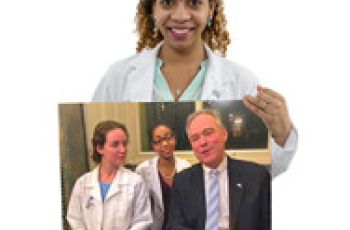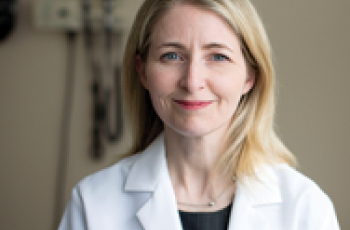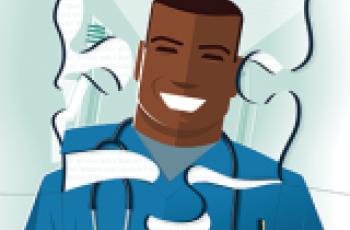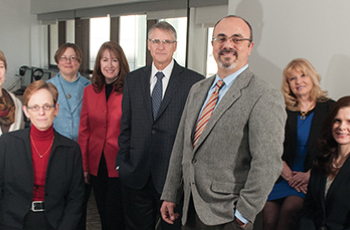Features
In all her years conducting research, Narine Sarvazyan, Ph.D., professor of pharmacology and physiology at the George Washington University School of Medicine and Health Sciences (SMHS), has had several ideas, but one — a cardiac imaging catheter — is the closest she’s come to traversing the info
Christian Hendrix had just started her first year at the George Washington University (GW) School of Medicine and Health Sciences when she was hit hard by the news: Within a matter of days, Philando Castile and Alton Sterling had been shot and killed by police officers.
In August 2016, members of the George Washington University (GW) Hospital anesthesia team — including Samantha Brackett, who was just one month into her first year of residency — were waiting on standby in the interventional radiology (IR) suite.
Immunology Links Research Priorities to Increase Efficiency, Collaboration, and Scientific Discovery
On the cover page of the immunology textbook Victoria Shanmugam used in medical school was a quotation that resonated with the young Londoner: “Immunology is the invention of the devil, who is making it up as he goes along because he is not too clear about this stuff either.”
At 11:45 a.m. on Friday, March 18, Paul Kline, M.D. ’16, stood patiently with his wife, Mercedes, and their daughter, Coral, boxed into a row in Ross 101 on GW’s Foggy Bottom campus.
When it comes to the importance of teamwork and trust, no area of education rivals the clinical health care setting. At GW’s School of Medicine and Health Sciences (SMHS), executive coaching and simulation have worked to promote the interprofessional education of health care students.
Being “Free From Falls” is something that most of us take for granted on a daily basis; however, for some people, particularly those who have diseases that make it difficult to walk or stay balanced, learning how to avoid a fall is critical.
Jehan El-Bayoumi, M.D., RESD ’88, dedicates herself to delivering medical care for all.










